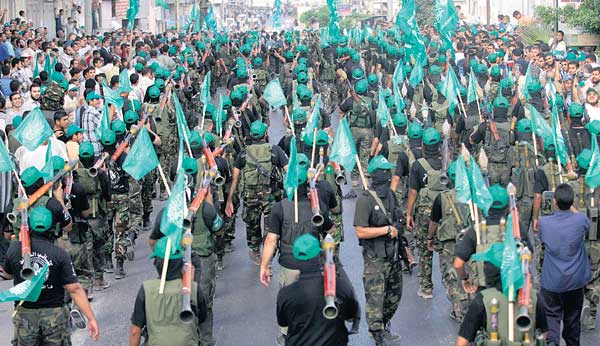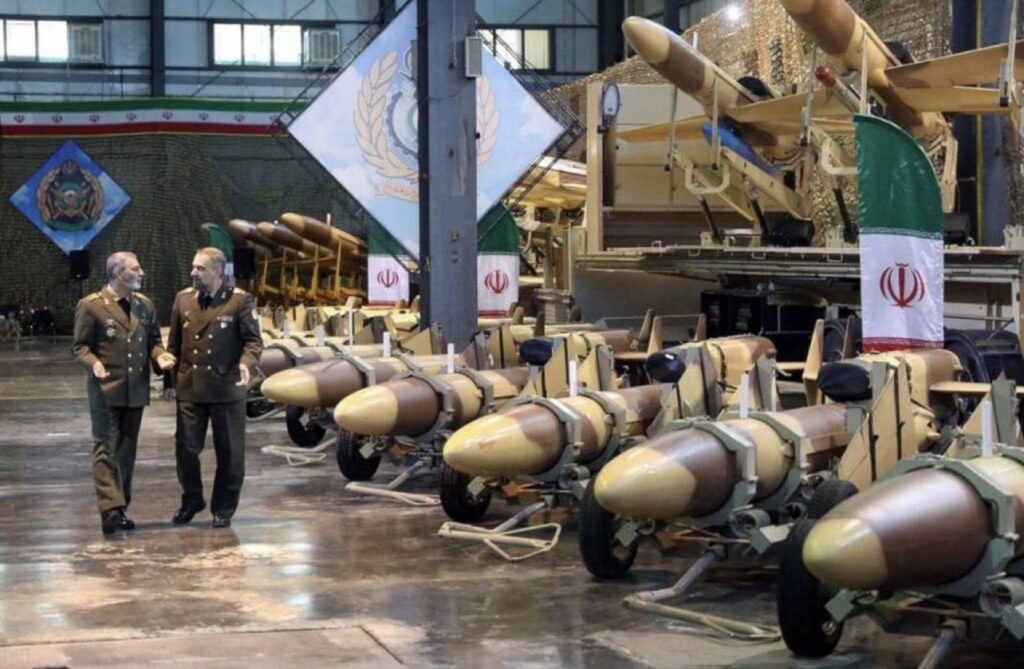UPDATES
Hamas and Gaza/ The Israeli Economic Miracle
May 7, 2015

Update from AIJAC
May 7, 2015
Number 05/15 #02
This Update features two stories about the situation in Hamas-controlled Gaza and the dilemmas this poses for Israel. Plus, it also includes an article with some fascinating statistics exploring Israel’s near-miraculous economic transformation over the past 30 years.
The first story explores Israel’s Gaza policy dilemmas, written by former Haaretz Palestinian affairs reporter Danny Rubinstein, now an academic. He begins by exploring efforts to reconcile Fatah and Hamas and asks whether Israel should support them – but concludes that Hamas will never give up on-the-ground security control of the strip. He then notes that while Israel has an interest in Hamas’ commitment at the moment to maintain quiet, Hamas’ economic situation is dire, and it might collapse of its own accord. For Rubinstein’s complete discussion, CLICK HERE.
Next up is Israeli academic expert Shaul Bartok discussing the significance of the return to command of Mohammed Deif, the head of Hamas’s military wing who was reportedly injured or killed in last year’s Gaza war. Deif, Bartok notes, is a unifying figure whose standing is enhanced by his survival seemingly against the odds, which is portrayed as divine intervention, and also one with extensive experience in terrorism and producing innovative means to attack Israel. He stands for militancy and alignment with Iran, as opposed to some of the political leaders who want to move closer to Saudi Arabia, but will be unable to do so as long as Deif heads the military wing. For all of Bartok’s analysis of Deif and his return, CLICK HERE.
Finally, we feature a piece from Israeli columnist Dror Eydar calling attention to Israel’s extraordinary economic and social achievements over recent decades. Among other statistics he cites are: a three decade increase in GNP of 900% and a per capita growth of 400%; 860% rise in the value of exports; sharp falls in deficits, nation-debt and security spending as a percentage of GNP, and vast growth in foreign currency reserves. He also discusses some less material signs of Israel’s success as a society – such as high rankings on various indexes of the best places to live or of human development, as well as straight polls of citizen happiness. For all the details, CLICK HERE.
Readers may also be interested in:
- Israel has a new narrow coalition government, with a 61-seat coalition (out of 120 knesset memnbers) formed overnight just before the legal deadline. This comes in the wake of a decision by departing Foreign Minister Avigdor Leiberman to resign and refuse to allow his Israel Beitenu party to join the new coalition. Much more on the new government in the next Update.
- Much is being written about the Salafist/ISIS challenge to Hamas in Gaza. Here is a good summary of the issue – in the wake of a Hamas allegedly destroying a Salafist Mosque and a bomb attack on a Hamas Security headquarters.
- A good factsheet on Hamas’ efforts to re-arm and prepare for a new round of conflict with Israel.
- Khaled Abu Toameh on the plight of Palestinians outside Israel and those who are victims of the PA and Hamas – whom no one seems to care about.
- Much attention is being paid to a new report from the left-wing Israeli NGO “Breaking the Silence” based on anonymous soldier testimony. Important context and criticism of that report comes from NGO-Monitor, former AP Journalist Matti Friedman, blogger Elder of Ziyon, and the media monitoring NGO Honest Reporting. Plus, former senior IDF legal officer Lt. Col. (res.) David Benjamin has offered a detailed refutation of claims that IDF actions in Gaza violated the laws of war, detailing both what happened and IDF procedures.
- Tel Aviv experienced a violent demonstration by Ethiopian-Israelis on Sunday, protesting the beating of an Ethiopian soldier by police and other injustices for their community. Some excellent comments on their plight – in the wake of the inspiring efforts to bring them to Israel in the 1980s – come from Israeli columnists Michael Freund and Boaz Bismuth. Meanwhile, Israeli PM Netanyahu met with the victimised soldier, Demas Fikadey, and gave a moving speech in the Knesset on the need for Israel to do more for its Ethiopian-Israel citizens.
- Some interesting material on Israel’s strategy in dealing with the Syrian conflict and the threats manifesting on the Syrian border from former General Yossi Kuperwasser and security affairs journalist Ron Ben Yishai.
- Two demonstrations, in Israel and Gaza, demonstrate some fundamental realities.
- An Israeli aid worker in Nepal described what it is like to rescue a trapped person, days after they were buried alive.
- Isi Leibler writes about the heroic actions, in the face of overwhelming odds, of Soviet Jewish leaders, many of whom are now passing away.
- Some examples from the many stories and comments now appearing at AIJAC’s daily “Fresh AIR” blog:
- A new AIJAC factsheet correcting some common myths about the growth of Israeli settlements.
Israel’s surprising Hamas-Abbas dilemma
Should it wait for Hamas to collapse? Conquer Gaza? Promote Ramallah-Gaza reconciliation?
In recent days reports have surfaced regarding efforts to bring about reconciliation between the Palestinian Authority and Hamas. Is such reconciliation possible? And what is the goal of the governments in Jerusalem, Ramallah and Cairo?
The recent efforts included a statement by Ramallah spokesman Ehab Bessaiso that the prime minister of the Palestinian national consensus government, Rami Hamdallah, and a group of ministers were about to visit Gaza. He did not give a date, nor the names of the ministers. Such a visit took place more than two weeks ago and ended with great embarrassment. Prime Minister Hamdallah decided to travel to a conference in Indonesia instead of Gaza, and his ministers who traveled from Ramallah to Gaza left disappointed.
Now the new UN Envoy to the Middle East, Nikolay Mladenov, is trying to promote reconciliation. Such reconciliation is necessary to accelerate efforts to rebuild the Strip and take Gaza and its 1.8 million residents out of the cycle of wars that has devastated the enclave thrice in the last eight years.
But reconciliation is a moot point for one simple reason: Hamas wonât give up control of Gaza – specifically of the security forces. Hamas is only willing to cede control of civilian affairs to the government in Ramallah. âHamas wants us to pay the salaries of its people in Gaza without having any responsibility as to what happens there,â one of the spokespeople in Ramallah said recently.
Meanwhile, violence between Hamas supporters and opponents in Gaza is escalating. Over the weekend, youths who call themselves âThe April 29th Movementâ held a demonstration in Gaza, calling for reconciliation, but it ended in clashes with police.
Policymakers in Israel appear to have accepted the fact that reconciliation is impossible and that Hamas will continue to rule the Strip. Last week Israeli media reported that Mohammed Deif, who was thought to have been assassinated by Israel in the summer 2014 Gaza war, had returned to lead the Hamas military wing and that relations were tense between him and the political leadership in Gaza which is inclined to adopt a long-term truce with Israel.
Many in Ramallah believe that Israel supports continued Hamas control of Gaza. This could well be true. Clearly, despite the ongoing military preparations to attack Israel, such as digging of more assault tunnels – Hamas seeks to maintain the truce put in place at the end of the war last August, at least for the coming year. That is why it has been preventing, by and large, the firing of rockets at Israel. Given the political struggle between Jerusalem and Ramallah, Israel is likely happier with a weakened Palestinian Authority than with one empowered by receiving control of Gaza.
But the Israeli position is also inconclusive. Foreign Minister Avigdor Lieberman has demanded time and again that the new government (which will probably be installed next week) clearly declare its intention to bring down Hamas. There is no doubt that Israel is capable of conquering the whole Strip in a short time. But the problem is not of capability, but rather of willingness to do so. And that willingness is missing.
A correct reading of the political map indicates that the only option for ending the Hamas reign in Gaza is to let it collapse. Politically, Hamas is besieged and isolated. Egypt considers it a terrorist organization and has been blocking the Rafah crossing between the Strip and the Sinai, which is a vital lifeline for Gaza and its impoverished residents. Hamas is attempting to forge ties and obtain aid from other Arab countries, but the only country willing to do so is Qatar, and it is unclear how much longer that support will last. Turkey helps out a bit, but Hamas attempts to get assistance from Saudi Arabia and Iran have not been very successful. Ideologically, Hamas, as a wing of the Muslim Brotherhood, is considered an enemy of both Tehran and Riyadh.
Hamas does not have the money to pay its 40,000 employees. This month, between 50 and 65 percent of their salaries were cut, with the minimum set at NIS1,000 (about $250). Hamas chiefs are accusing Ramallah of preventing the payment of salaries, and UN envoy Mladenov is continuing his efforts to guarantee payment for the civilian government clerks in Gaza, most of them employees of the education and health systems hired by Hamas in recent years. How long can Hamas hold on? Hard to say. What is clear for the time being is that Hamas is not angling for another war, not yet. Given the regionâs instability, that, too, is a lot.
Danny Rubinstein lectures on Arab issues at Ben Gurion University and Hebrew University, and is a columnist on Palestinian economic issues at Calcalist.
Back to Top
————————————————————————
Deif: The undying symbol of Hamas
Shaul Bartel
Israel Hayom, April 30
Any remaining doubt surrounding the rumored death of Hamas military commander Mohammed Diab Ibrahim al-Masri (Abu Khaled), otherwise known as Mohammed Deif, dissipated on Wednesday when he was confirmed to still be alive.
Deif, who was born in the Khan Younis refugee camp in the Gaza Strip in 1965, was drawn to religion from an early age and became a member of the Muslim Brotherhood before eventually joining Hamas. In May 1989, he was convicted and sentenced by Israel to 16 months in prison for his involvement in the terrorist group’s military activities. With the establishment of the Izzedine al-Qassam Brigades, the military wing of Hamas, Deif became further involved in Hamas’ military operations as the protege of Yahya Ayyash, dubbed “the Engineer” by Israel, until the latter was assassinated in 1996. It was Deif who replaced Imad Akel, after his death, as commander of Hamas’ military wing in Gaza.
Throughout the years, as Israel succeeded in eliminating Hamas’ military leaders, primarily in the West Bank, Deif rose to become the pre-eminent organizational and professional authority within the group’s military hierarchy. Following the assassination of Salah Shehadeh in July 2002 in an Israeli airstrike that also killed 14 of his relatives, Deif was officially appointed leader of Hamas’ military wing in the West Bank and Gaza.
Deif has survived five assassination attempts, and the legends of his audacity and talent for evading Israel’s wrath have afforded him an aura of mystique, similar to that of Yasser Arafat in the past. The most recent attempt on his life came on August 21, 2014, toward the end of Operation Protective Edge. His death would have been the pinnacle of Israel’s military campaign and would have delivered a severe morale blow to Hamas. But Deif, who had already been seriously wounded in previous assassination attempts, managed — it appears — to escape this time as well; although he was likely wounded.
In every one of Israel’s wars in Gaza (operations Cast Lead, Pillar of Defense and Protective Edge), Deif broadcast a victory speech to the people in which the main message was patience in the face of the crimes committed by the occupation (referring to Israel), including the killing of women and children, for instance his wife and two children who were killed in the most recent attempt on his life.
The last of these victory speech recordings was released on July 29, 2014, following the infiltration attack at the Nahal Oz outpost, in which five IDF soldiers were killed. Deif warned Israel of another Holocaust and boasted of the rousing victory achieved by Hamas’ fighters.
Deif is a unifying figure within Hamas. His vast organizational experience in soldier abductions and suicide terrorist attacks, which have left hundreds of Israelis dead since 1995, make him a venerated figure among the Palestinian people and within the organization. Among his operational designs are home-made mortars with independent trigger mechanisms; underground infiltration and attack tunnels with which to kill and kidnap Israeli civilians and soldiers to be used as bargaining chips; a naval and airborne force; and forging ties with other Palestinian organizations as well as Hezbollah in Lebanon and Islamic State in Sinai. Because of Deif, Hamas enjoys complete coordination with the Al-Quds Brigades, the military wing of Islamic Jihad.
The significance of such tight coordination between the various organizations includes closer ties with Iran, which provides essential assistance for the purpose of enhancing infrastructure and strength. This approach by Deif is not new. In fact, it began in the 1990s. Questions over the prudence of such an approach, however, often spark rivalries and divisions within Hamas. The “moderate” stream in Hamas wants to move closer to Saudi Arabia and the money and support it can provide, but as long as Deif maintains his grip on the military wing it will neither alter its current policies or stop evolving into a standardized army with him as its commander.
Israel’s failure to eliminate Deif is depicted on Hamas websites and Facebook pages as divine intervention. The man is a symbol of the resistance, and the symbol is neither dead nor defeated by the Jews. For Hamas, his survival highlights Israeli helplessness and the rout it suffered in Gaza. “We will win or die a holy death” — this was and continues to be Hamas’ battle cry and is most strongly identified with Deif, Hamas’ military commander in every confrontation with Israel over the past 13 years, who is willing to keep fighting until the final campaign for the liberation of Palestine.
Prof. Shaul Bartal is a scholar in the Middle Eastern Studies Department at Bar-Ilan University.
Back to Top
————————————————————————
Israel is nothing short of a miracle
Dror Eydar
Israel Hayom, May 1
Ever since the Israelites made their way out of Egypt, the Jews have tended to complain, and we always will — but let us take a look at the numbers. Where were we in 1984 and where are we today? Guess what, we have a lot to be proud of.
1.
In honor of Israel’s 67th birthday, here are a few remarkable facts about the economic wonder that is the State of Israel. Our sages taught us that it is important to give thanks for what we have. On Independence Day, my Facebook friend, the gifted writer Galit Distal Atbaryan, mentioned Louis C.K., who spoke about the way people complain about flying. People “soar through the clouds, impossibly; partake in the miracle of human flight. Sitting in a chair in the sky like a Greek god” and complain about the chair not reclining far enough. That is exactly our attitude toward the state in which we live. “Israel is nothing short of a miracle, like a plane that slices through the sky,” she wrote.
Indeed, the complaining and desperation over the “situation” began with Israel’s birth, when the Israelites were led out of Egypt. Masses of slaves who were just recently freed yelled at Moses: “Because there were no graves in Egypt, hast thou taken us away to die in the wilderness? Wherefore hast thou dealt thus with us, to bring us forth out of Egypt?” (Exodus 14:11).
They didn’t stop at that. They continued to accuse him of destroying their relationship with the Egyptian empire and the pharaohs. “Is not this the word that we spoke unto thee in Egypt, saying: Let us alone, that we may serve the Egyptians? For it were better for us to serve the Egyptians, than that we should die in the wilderness.'” (Exodus 14:12). After that came the crossing of the Red Sea, but even the miracle that Moses performed — splitting the sea and ushering the Israelites through it on dry land — was not enough to stop the complaints. Since then and to this day we enjoy complaining.
So for us complainers, here are a few reasons for optimism. Of course there is plenty to improve on, but it would serve us well to take a look at where we were 30 years ago and where we are today. The following data was compiled by Dr. Adam Reuter and his company Financial Immunities Ltd.
2.
Well, in 1984, the population of Israel was 4.1 million. Thirty years later, the population doubled to stand at 8.2 million. The average number of rooms per person increased by 37% during that time. In 1984, the number of vehicles per 1,000 people was 157. Last year there were 364 vehicles per 1,000 people. Today, the gross national product is $307 billion, but 30 years ago it was a mere $30 billion. That is an increase of more than 900%! In 1984, the GNP per capita was $7,000, and in 2014 it climbed to $36,000 — an increase of more than 400%.
In 1984, Israel’s foreign currency reserves amounted to $3 billion. Thirty years later, our reserves skyrocketed to $90 billion — an indication of financial stability. The national debt was 280% of the GNP in 1984, but by 2014 it had dropped to 66% of the GNP.
Security expenditure comprised 20% of the GNP then, and only 5% today, and it stands to be even less in the future. The tax burden was 45% and has gone down to 32%. American aid was 10% of the GNP and is now only 1%!
In 1984 Israel’s exports were valued at $10 billion, and 30 years later they are valued at $96 billion — that’s an 860% increase. In 1984 high-tech exports were valued at $1 billion, and at $37 billion in 2014 — a 3,600% increase. Not bad. The national deficit made up 17% of the GNP in 1984 and today only 3% — an 82% decrease.
In 1984, the public sector employed 75% of the working public, while today that figure is only 43%. Employment of women was 34% and by 2014 it had risen to 54%.
Government regulation of capital markets declined from 85% then to 27% today. Annual interest was 770% and inflation was 450% in 1984, but in 2014 the annual interest rate settled at 5% and annual inflation at a mere 1%. Incidentally, national expenditure on research and development has risen by more than 220% over the last 30 years.
In 1984 we did not have independent sources of energy, but today, 38% of our energy comes from our own sources, and we are on our way to complete energy independence. We did not have desalinated water in 1984 and today more than 40% of our water consumption comes from the desalination plants that we built.
3.
Over the last five years, the cumulative economic growth was 21% — the second highest rate among the 34 member nations of the Organization for Economic Cooperation and Development. A recent study conducted by the Economist tried to divine where it would be best to live as an adult in the year 2030 in terms of health, wealth, and personal security. In an index ranking the world’s countries in order of where it is best to be born, Israel ranked 20th — higher than the U.K., France, Italy, and even Japan.
The most important economic aspect, one that effectively forecasts future economic growth, is the percentage of youngsters aged 20 to 34 among the general population. This age group works the hardest while generating the highest demand for consumer goods, as that is the stage when people generally start their families. Israel is blessed with a relatively young population, as compared to the other OECD states (the high birthrate among Israelis, even secular ones, is unique in the Western world, thank god), and this age group stands to grow bigger in the coming decades.
According to a CIA report, mortality rates in Israel are the second lowest in the OECD and among the lowest in the world. And we haven’t yet mentioned the steady influx of tens of thousands of Jews who immigrate to Israel from other countries every year.
According to the Wall Street Journal, Israel is the second most educated country in the world, placing behind Canada and ahead of Japan. While there were 64,000 Israelis enrolled in higher education institutions in 1984, there are currently 306,000 enrolled in colleges and universities across the country. Of the 148 countries analyzed, Israel ranks first in innovative capability, second in entrepreneurship, and third in global innovation.
Over the last 20 years, the Israeli economy grew by 180%, while the number of residents increased by only 45%. Israel ranked 19th on the United Nations Human Development Index, which uses life expectancy, education, and income to calculate its results — ahead of Belgium, Austria, France and Finland.
Let us conclude with an interesting figure. The U.N.’s 2015 World Happiness Report, released last week, found that Israelis are happier than most people in the Western world. Israel ranked 6th among the OECD states and 11th overall, out of 156 countries worldwide.
4.
I concede that after years of Israel being constantly maligned, and after the recent election in which we were told how terrible things are here, it is difficult to reconcile what we know with this optimistic data. Therefore, we must keep telling ourselves how miraculous this country is, thus creating an antidote to protect us from the venom of desperation. In this way we can continue the legacy of Joshua the son of Nun and Caleb the son of Jephunneh who were wise enough to say, “The land, which we passed through to spy it out, is an exceeding good land” (Numbers 14:7).
This data indicates where we were 30 years ago. The truth is that we should actually measure our current situation against what we had 70 years ago — in 1945.
“Lift up thine eyes round about, and behold: all these gather themselves together, and come to thee. … For thy waste and thy desolate places and thy land that hath been destroyed–surely now shalt thou be too strait for the inhabitants, and they that swallowed thee up shall be far away. Then shalt thou say in thy heart: ‘Who hath begotten me these, seeing I have been bereaved of my children, and am solitary, an exile, and wandering to and fro?” (Isaiah 49:18-21).
Think about it.











